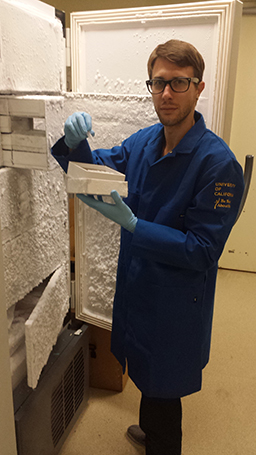By Bay Area Lyme  “Lyme is a debilitating illness for which diagnosis is critical for cure.” –Dr. Jerome Bouquet
“Lyme is a debilitating illness for which diagnosis is critical for cure.” –Dr. Jerome Bouquet
Jerome Bouquet, PhD, was recognized in May 2014 as an Emerging Leader in the field of Lyme research. This award recognizes creative ingenuity and novel approaches for the development of better diagnostics and treatment for Lyme disease. The award also carries a $100,000 project grant to fund a new research initiative. Here, Dr. Bouquet talks about his work in the field and his funded project, “Development of a Host Biomarker Assay for the Diagnosis of Acute and Post-Treatment Lyme Disease.”
Q: Earlier this year, you were recognized by Bay Area Lyme Foundation as one of the Emerging Leaders in the field of Lyme disease research. Tell us about your project, what do you hope to accomplish?
A:The project emerged as a result of (1) the lack of sensitive diagnostics for Lyme disease; and (2) the expertise of our laboratory in next generation sequencing. We are developing the unbiased detection of a large number of pathogens. But Lyme disease is trickier, because Borrelia burgdorferi, the bacteria responsible for the disease, is only transiently present in the blood at low titer. So instead of looking for the pathogen, we are examining the human host at a cellular level. How do immune cells respond to the infection and how can we decode and measure their response? That’s what transcriptome profiling is.
 Guest blog by Dr. William St. Lawrence, Village Square Veterinarian, Portola Valley Village Square
Guest blog by Dr. William St. Lawrence, Village Square Veterinarian, Portola Valley Village Square


